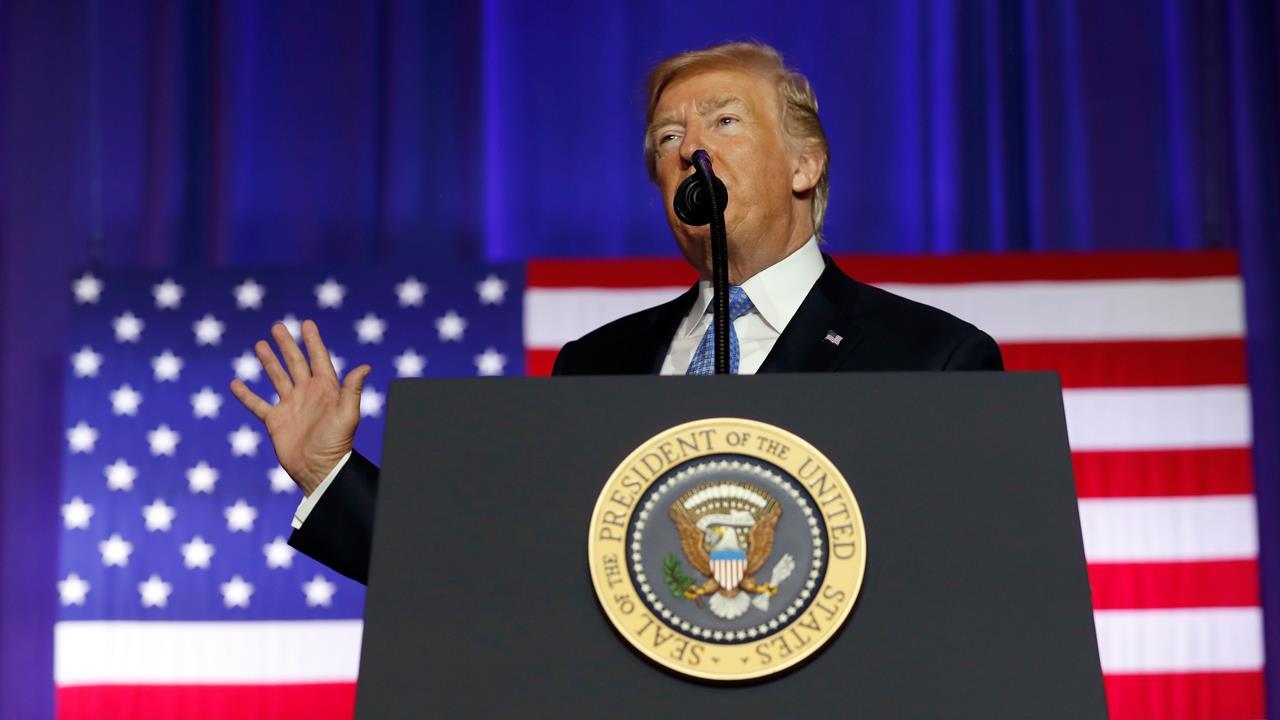Trump's agenda in 2018: What's next?
After Republicans scored their first major legislative victory with a tax reform bill passed just before the end of 2017, the Trump administration has started looking ahead to next year’s legislative docket.
While President Donald Trump’s aggressive plans to reform health care, infrastructure and the tax system during the first year of his tenure fell short on some accounts, his plans for next year appear equally ambitious, with welfare and infrastructure reform topping the list, according to National Economic Director Gary Cohn.
Here’s a look at what the administration and Congress are set to take on as we head into the New Year.
Health care
While the GOP failed to pass multiple efforts to repeal and replace the Affordable Care Act in 2017, the president has not given up on designs to overhaul the former administration’s signature legislative achievement.
In a tweet fired off in November, President Trump reiterated that ObamaCare is a “disaster,” adding that Republicans would begin to repeal and replace “right after Tax Cuts.”
While different variations of repeal and replace narrowly failed to pass the Senate this year, the president took steps toward dismantling the Affordable Care Act through an executive order issued in October. That order directed the administration to look into allowing employers to form associations and obtain coverage across state lines, expanding the use of short-term limited duration insurance (STLDI) plans and expanding the use of Health Reimbursement Arrangements, or tax-free accounts that allow employers to reimburse employees for medical expenses.
The overall goal of these directives, according to the White House, was to provide near-term relief for Americans and to lower costs by increasing competition and choice.
Welfare reform
One of the other items the president has brought up as a priority after Republicans overhaul the tax system is reforming welfare, which includes government programs like Medicaid, Food Stamps and Housing Assistance.
“We’re looking very strongly at welfare reform, and that’ll all take place right after taxes, very soon, very shortly after taxes,” Trump said at the White House last month.
During an interview with Axios in late-December, Cohn said he expected that welfare reform would receive bipartisan support, with at least 60 votes in the Senate.
There are bills currently floating around Congress that aim to strengthen work requirements for welfare programs, something that coincides with the administration’s stated goals of using welfare as an interim strategy to help lift Americans out of unemployment and poverty.
Office of Management and Budget (OMB) director and Consumer Financial Protection Bureau (CFPB) interim director Mick Mulvaney, a known deficit hawk, said back in March that the administration was looking to create jobs and put those who want to work, back to work.
At the same time, he said the White House would weed out welfare freeloaders and take steps toward making sure Americans aren’t exploiting programs, while assuring that the administration would not deny deserving people services.
Infrastructure
Senior White House officials have said President Trump will release the full details of his infrastructure plan early next year. It is expected to require at least $200 billion in direct government funds over the course of a decade, in addition to funding from the private sector.
While an infrastructure revamp was widely viewed as a bipartisan proposal at the outset of the president’s tenure, experts believe the outlook may be murkier after the passage of a tax reform bill that could pile on to the deficit. Trump promised a $1 trillion infrastructure overhaul, which was supposed to be detailed within his first 100 days in office.
U.S. Transportation Secretary Elaine Chao said in September that states and localities will compete for government funds, with the most innovative projects winning more federal dollars.
The infrastructure revamp is expected to address everything from bridges, roads and airports to energy, broadband and even Veterans Affairs hospitals.
Cohn told Axios that having broadband in rural areas is a priority. He also said that the government needs to reimagine infrastructure based on the future, adding that the U.S. can’t keep building cities in 2050.
Housing reform
U.S. Treasury Secretary Steven Mnuchin has been a key player in the tax reform discussions, but has his sights set on housing reform for the coming year.
“I am determined that we have housing reform and that we come up with a permanent solution for Fannie [Mae] and Freddie [Mac] so that they’re not in the current form, which is essentially owned by the government,” he said during a November speech at the Economic Club of New York. “That’ll be a big focus of mine for next year.”
Mnuchin also said this is something he expected housing reform to be completed on a “bipartisan basis.”




















